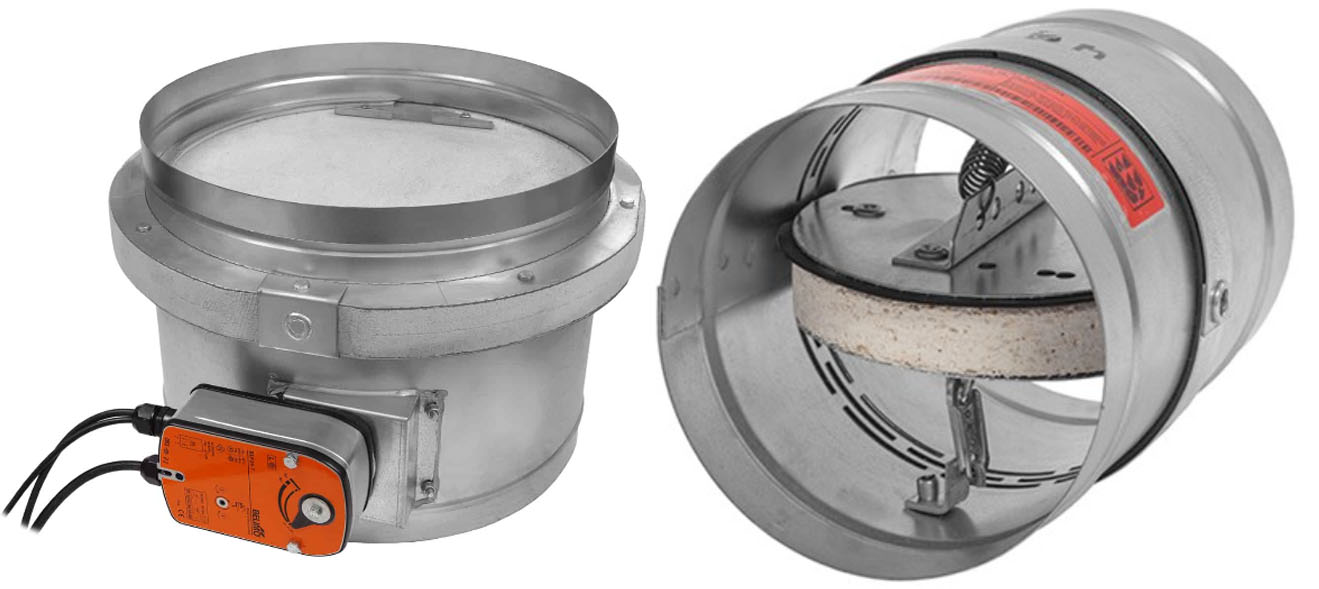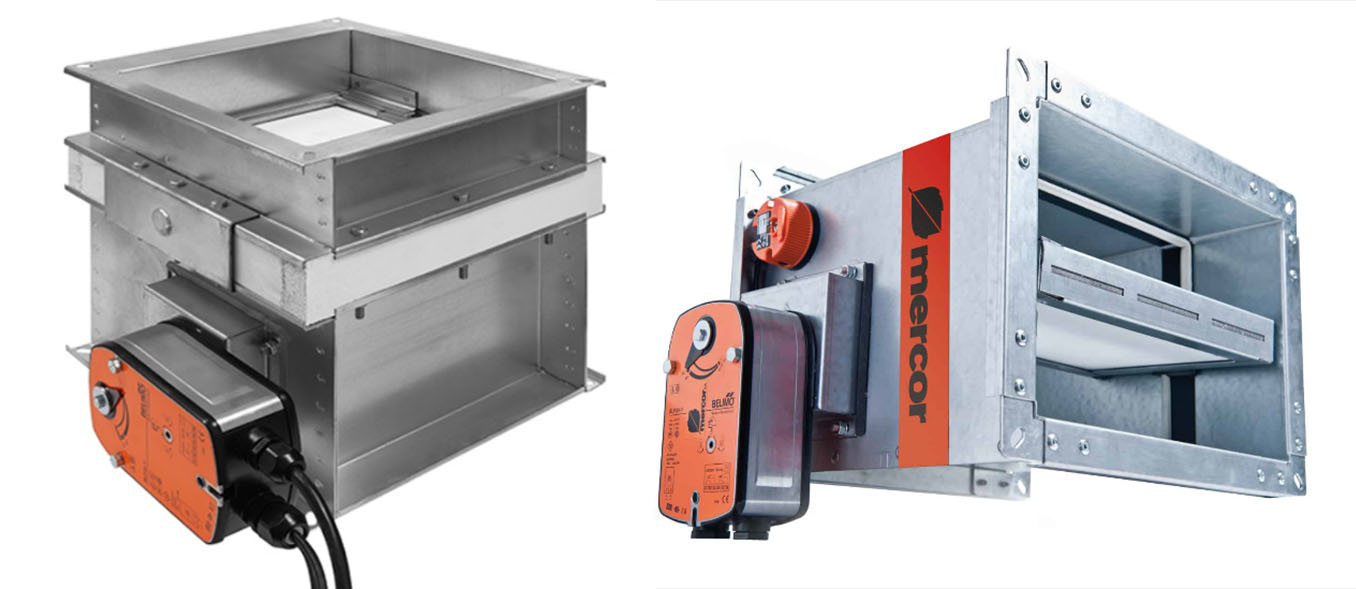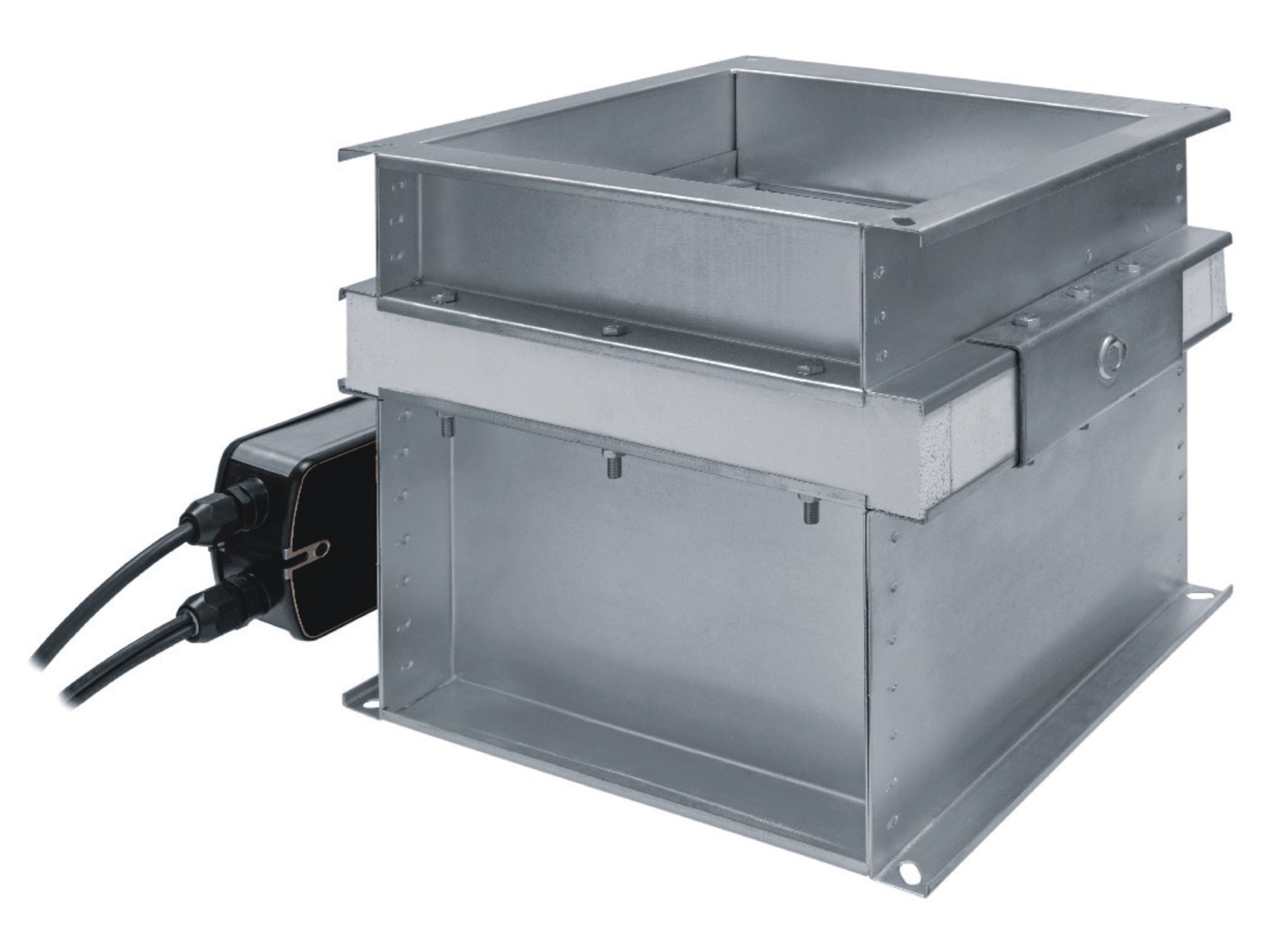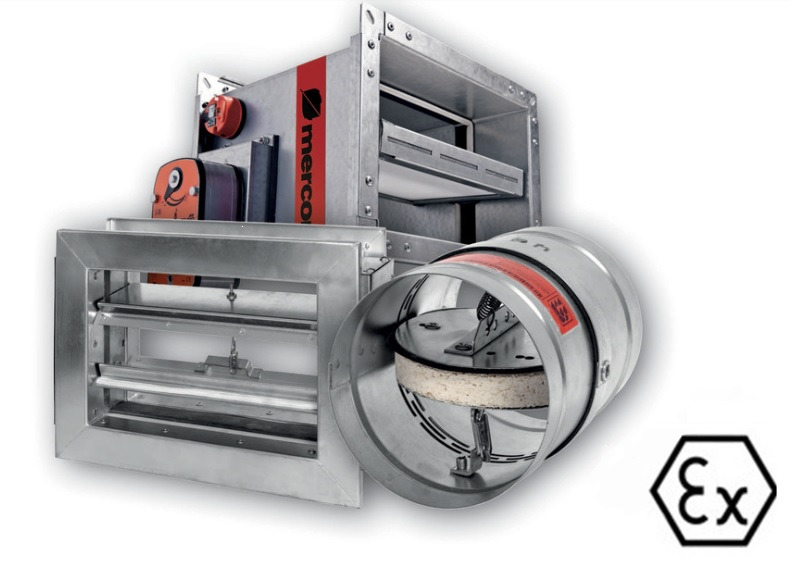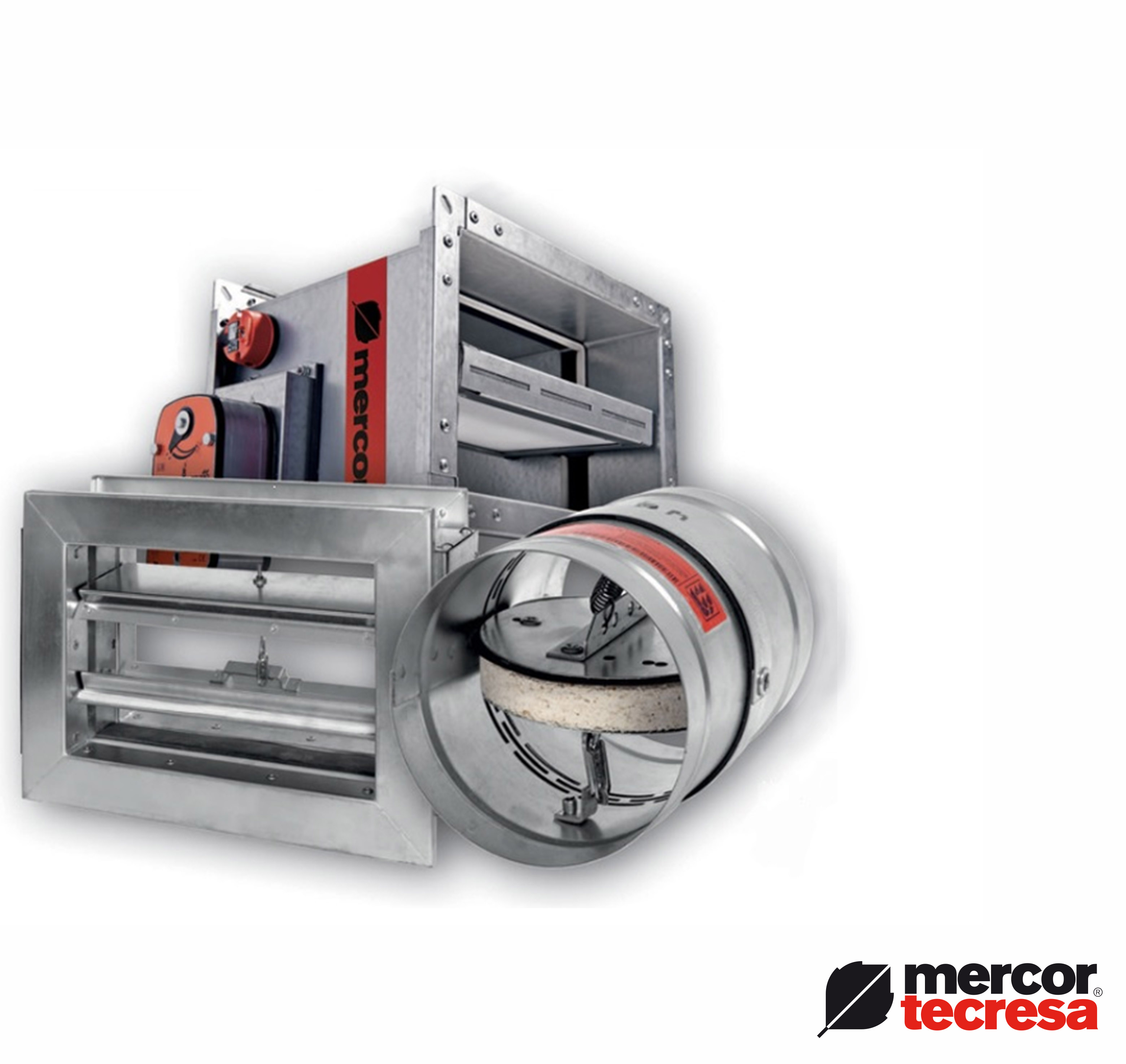
Sectorization of service crossing – Forced ventilation, fire dampers
We will continue with the sectorization of Ventilation Ducts; here, we will be talking about forced ventilation. As the CTE states in its DB-SI section on Inside Propagation, there are two ways of sectorization in the case of ventilation ducts:
-
Provide an element which, in the event of fire, automatically blocks the cross-section and guarantees at that point a fire resistance at least equal to the one of the crossed element. For example, an automatic fire damper EI t (i <-> o) where t is the required fire resistance time of the crossed partition element, or an intumescent sealing device.
- Passing elements providing resistance at least equal to that of the element crossed; for example, ventilation ducts EI t (i <-> o) where t is the required fire resistance time of the crossed partition element.
Today we are going to discuss about the Fire Dampers and we will save for the last post of sealing solutions the second possibility which is the Fire Resistant Ducts.
Fire dampers are elements installed in the part of the duct that crosses the fire sectoring element. They are generally designed to be open and to be closed in the event of a fire, either by a Thermal Fuse or by the connection to a Fire Detection System. Usually, we will talk about one or more elements equipped with Fire Resistance that will close the passage to smoke and flames along with various intumescent elements that will close the small gaps between the walls, and the damper blade to accomplish the requirement added to these components which is the tightness to the passage of smoke “S”.
At mercor tecresa® we have been developing different versions of fire dampers to comply with all the necessary requirements of each project. All models are CE marked and have been tested according to the European standards. These are the following models:
- Circular fire dampers: models MCR FID – PRO and FID – O, with a Fire Resistance EIS 120 (E=Integrity, I=Thermal insulation, S=Smoke tightness). These dampers are designed to sectionalize the circular ducts that might be found on the building.
-
Rectangular fire dampers: models MCR FID – P and FID – C, with a Fire Resistance EIS 120 (E=Integrity, I=Thermal Insulation, S=Smoke tightness). To sectionalize Rectangular Ducts.
-
Multi-zone fire dampers: model MCR FID – V with a Fire Resistance EIS 120 (E=Integrity, I=Thermal insulation, S=Smoke tightness). They are specially designed to discriminate between different areas of the same building, in which a damper may remain open while in other areas the damper remains closed, as required.
-
Fire dampers for explosion hazardous areas: models: MCR FID S/S p/P, MCR FID S/S p/O, MCR FID S/S c/P, MCR FID PRO, MCR WIP/S, MCR WIP/T, MCR WIP/T-G and MCR WIP PRO/S with a Fire Resistance EIS 120 (E=Integrity, I=Thermal insulation, S=Smoke tightness). These fire dampers are certified in accordance with the ATEX directive (potentially explosive atmospheres). They are designed to be installed in ventilation ducts as they pass through walls in order to prevent the passage of fire and smoke between two different areas in environments with an added risk of explosion.
Contact our technical team for further information about our products.
